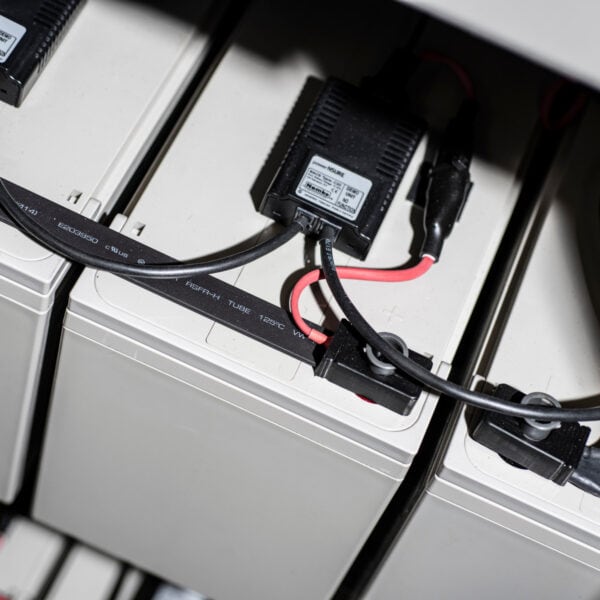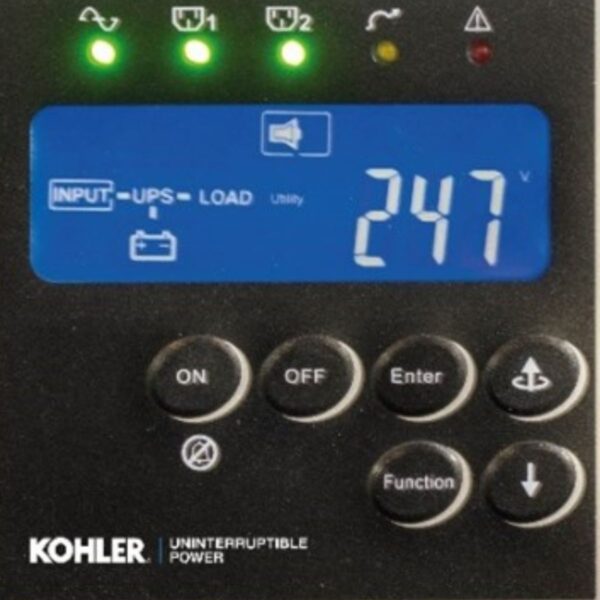A UPS (uninterruptible power supply) sits between an alternative source of power – such as a standby diesel generator – and protected loads. Most UPS are designed to power connected loads continuously via their inverter, which also enables conditioning of mains supply voltage and insurance of a break-free supply of electrical energy in the even of a mains failure. In most applications, UPS are considered critical to business continuity without which loads would not be able to operate during a power outage. For this reason, load bank testing is implemented to ensure UPS can meet the requirements of their intended function when most needed.
What is load bank testing?
Load bank testing is a way of validating the correct operational performance and battery autonomy of the UPS system. It tests the UPS and generator under load conditions. It is most often carried out during preventative maintenance. As a UPS battery set is only as strong as its weakest battery cell, load bank testing can also be used to ascertain the condition of UPS batteries and battery sets (or ‘strings’ as they are also known) to indicate if any individual cells are approaching the end of their working life and not holding a charge or about to fail. This enables them to be replaced in advance of critical application.
Generator load bank testing
Load bank testing is offered as a service by suppliers of power protection equipment, such as KOHLER Uninterruptible Power Limited. Some suppliers offer load bank testing as part of the UPS commissioning process but caution must be exercised: ideally it should be carried out at least one week after the UPS has been commissioned to permit the voltage across the battery blocks to equalise and batteries to be fully charged. Load bank testing prior to this will not yield accurate results, or give a true picture of how the system is running, and thus be a waste of time and money.
Suppliers of load bank testing normally carry their own small load banks (typically 100 kW or less) and will hire in larger dummy sets to test larger UPS systems as required. These load banks are typically resistive (neither inductive nor capacitive and with no initial switch-on surge. Current rises immediately to a steady state). Load banks are available for either ac or dc systems. An ac load bank is used to test entire UPS systems, whereas a dc load bank will be used to test batteries. Reactive load banks are also available (typically with a lagging power factor 0.8) but they tend to be larger and heavier in design.
What is the point of load bank testing?
The point is to test the power protection system (and component parts) under load conditions but without risking supply to protected loads – just as components in a racing car can be tested in simulators to see if they hold up in race conditions but without risking crashing the actual car itself.
The point about UPS is that operators hope they’re never going to have to use it in earnest – like a fire alarm that sits in silence most of the time until there’s a fire and then blares into action. But what if it didn’t? The same considerations apply with UPS and power protection in general – the time to find out it does not work (or has a fault) is not when mains power fails. Fire alarms need to be tested, as do UPS, periodically, to ensure they will work when required. With a generator, merely starting it up is insufficient. Operators need to know it will actually run, fully loaded. Same as a car – a driver doesn’t just start it up and say “yes, that works”, they actually take it for a drive – and that is what load bank testing does – takes a power protection system for a drive in a controlled environment.
How is it done and what do the results report?
Load banks should be supplied with suitably rated cables, which enable it to be placed no more than 20 metres from the UPS terminals or output power distribution unit (PDU). Load banks comprise heating elements and fans for cooling and allowances should be made for heat dissipation and noise attenuation during the test. Needless to say, it should not be carried out within the vicinity of sensitive alarms, sprinkler systems or close to where people are working.
Measurements are taken during discharge from which it is possible to determine battery and system performance. A load bank test will provide timely identification of problems with the generator and UPS and an indication of remedial actions that should be taken. In the case of a standby generator, a load bank test will indicate the engine’s ability to provide the required power; the alternator’s capability to provide the required voltage stability; stable frequency; efficiency of control systems under varying conditions of load; performance of the whole system; oil and fuel pressure. It will also help remove deposits from pistons, engine castings and exhausts, identify potential weaknesses and record results and any work that needs to be done.
Load bank testing costs include the hire of the equipment (for larger systems) where applicable, engineer time and temporary cable provision and connection. Although maintenance and testing of power protection equipment should be routine and regular, load bank testing itself should be carried out prudently and with caution as it can reduce system resilience, discharge batteries and may, in that case, place connected loads at risk. For these reasons it is normally carried out outside of normal working hours and by experienced professionals.
Load bank testing will ensure that the components within the power protection system will work and perform together as intended when called upon to support a critical load.
For more information regarding any of our uninterruptible power supply products or UPS services, you can get in touch with KOHLER Uninterruptible Power via our contact page or call us on 0800 731 3269.





